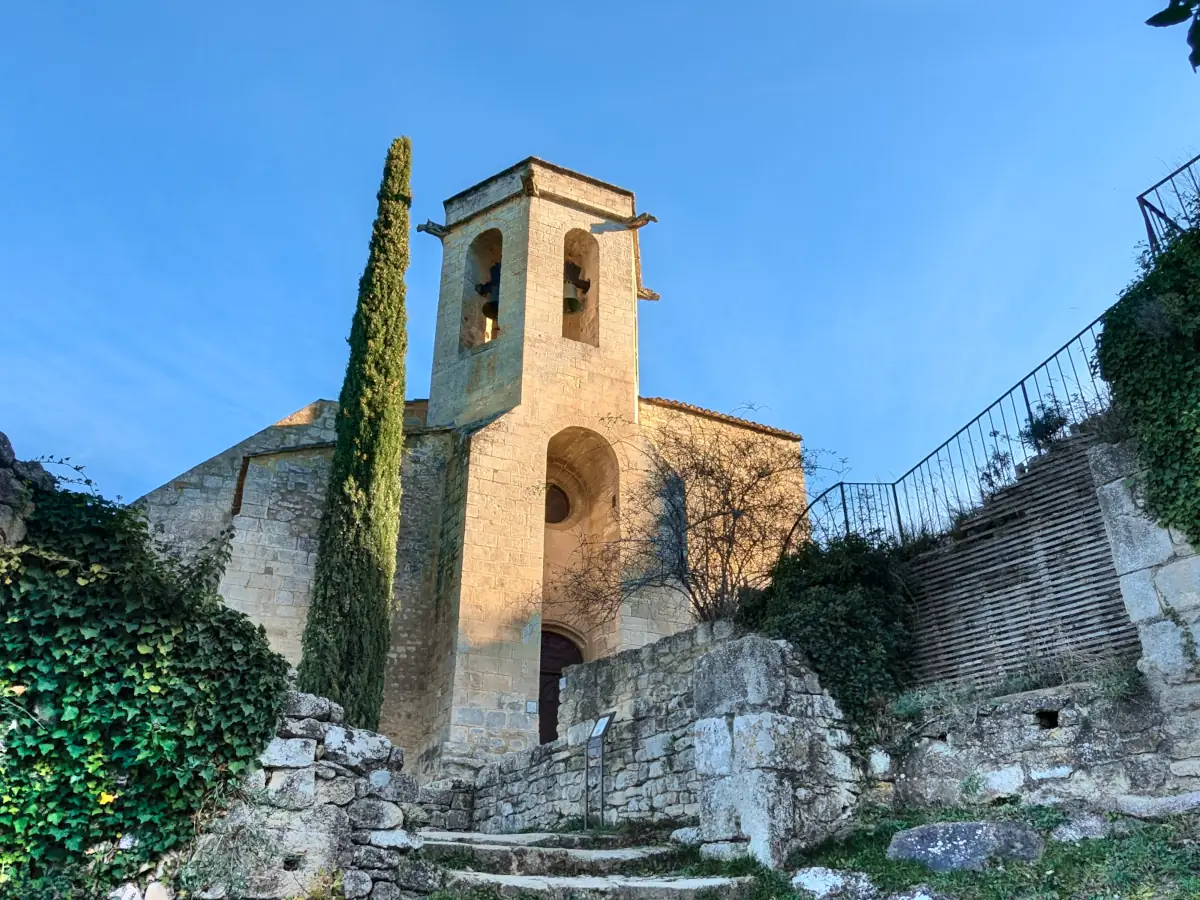Perched on a foothill of the Luberon, the village of Oppède-le-Vieux, seemingly suspended in time, silently watches over the vineyards and olive groves that stretch across the plain below.
An Almost Abandoned Village
Oppède-le-Vieux was gradually deserted by its inhabitants from the 18th century onward in favor of Oppède-les-Poulivets, the modern village located in the valley, closer to farmland, water sources, and less exposed to the Mistral wind.
From the Place de la Croix, cobbled lanes climb toward the Romanesque church and the remains of a castle. Lined with timeworn stone houses, ivy-clad walls, and empty mullioned windows overtaken by lush vegetation, they exude an aura of serenity and wistful abandonment.
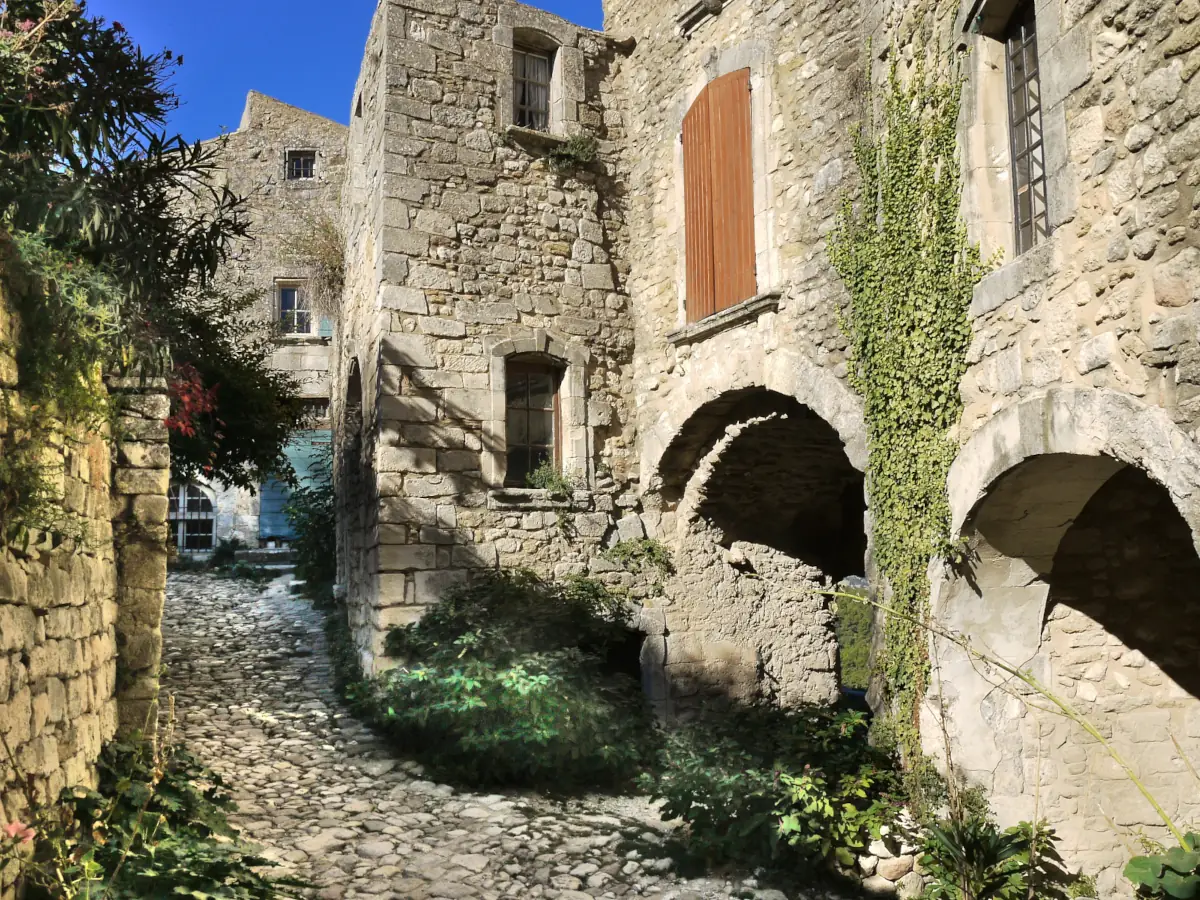
The Church and the Fortress
At the summit of the village, the panorama offers a splendid view of the Calavon Valley and the majestic silhouette of Mont Ventoux closing the horizon to the north. The Church of Notre-Dame-d’Alidon, dating from the 12th century, stands in austere simplicity. Its thick walls and modest stained glass windows evoke a faith deeply rooted in medieval life.
Beside it lie the ruins of the castle, closed to the public due to ongoing restoration. Built in the 13th century and abandoned long ago, the fortress is being restored by a team of volunteers who are clearing the grounds, stabilizing the walls, and repointing the stones—preparing it for a safe reopening in the future.
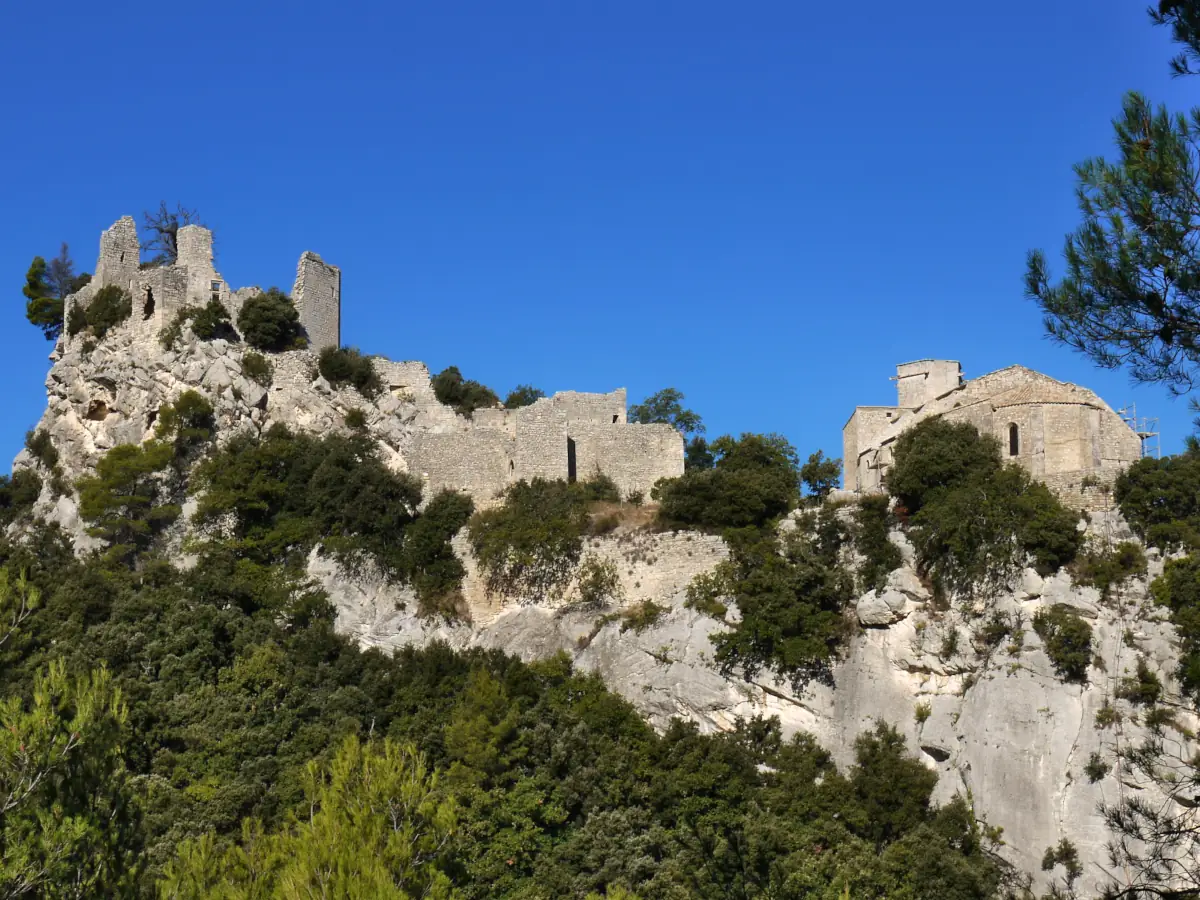
History of Oppède
Jean Maynier, Baron of Oppède and president of the Parliament of Aix-en-Provence, led in 1545 a brutal repression against the Waldensians, Protestant settlers of the Luberon who had arrived in great numbers since the 15th century. This campaign, marked by massacres of villagers, left around 3,000 dead and led to the destruction of 23 villages. Accused of exceeding the king’s orders—which had only requested a limited number of executions—the baron nonetheless escaped punishment thanks to his influential connections.
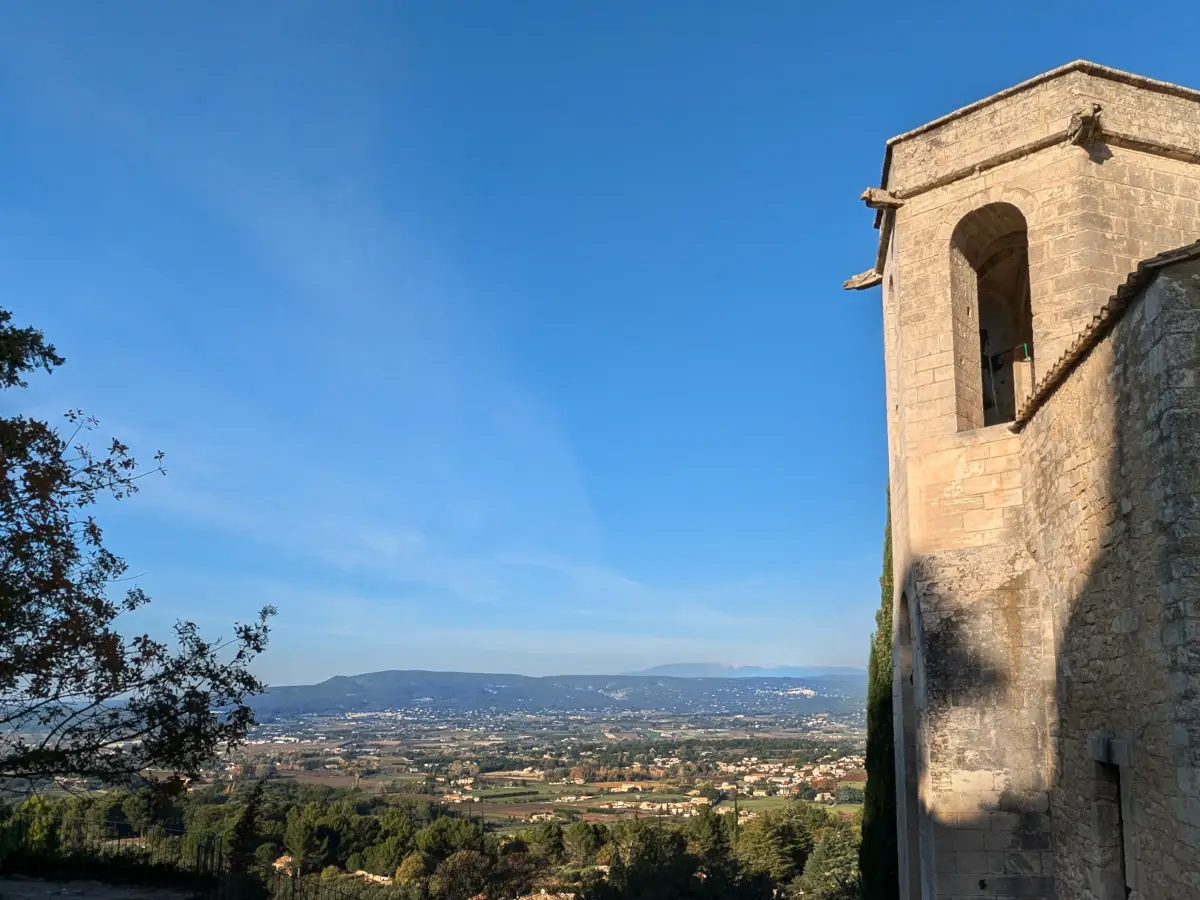
A Haven for Artists
Far from the crowds, Oppède-le-Vieux nurtures a uniquely serene atmosphere. Its deserted cobbled streets, shaded little squares, and hanging gardens invite contemplation. During the war, it became a refuge for Consuelo de Saint-Exupéry, wife of Antoine de Saint-Exupéry, alongside other artists, including architect Bernard Zehrfuss. She wrote about this magical place in her book Oppède, which helped bring it to greater attention. More recently, comedian Michel Leeb organized a festival to support the restoration of the village church. Filmmaker Ridley Scott also owns a property in the area. As you wander through the village, you may come across the workshop of Olivia Tregault, an animal sculptor.
A Sun-Drenched Terroir
Oppède-le-Vieux is surrounded by a generous terroir, emblematic of the Luberon. The surrounding vineyards produce AOC Luberon wines with fruity and spicy notes, while the olive groves yield golden olive oil prized for its delicacy. Cherry orchards complete this colorful and flavorful landscape. Local producers are eager to share the tastes and traditions of this sun-kissed land.
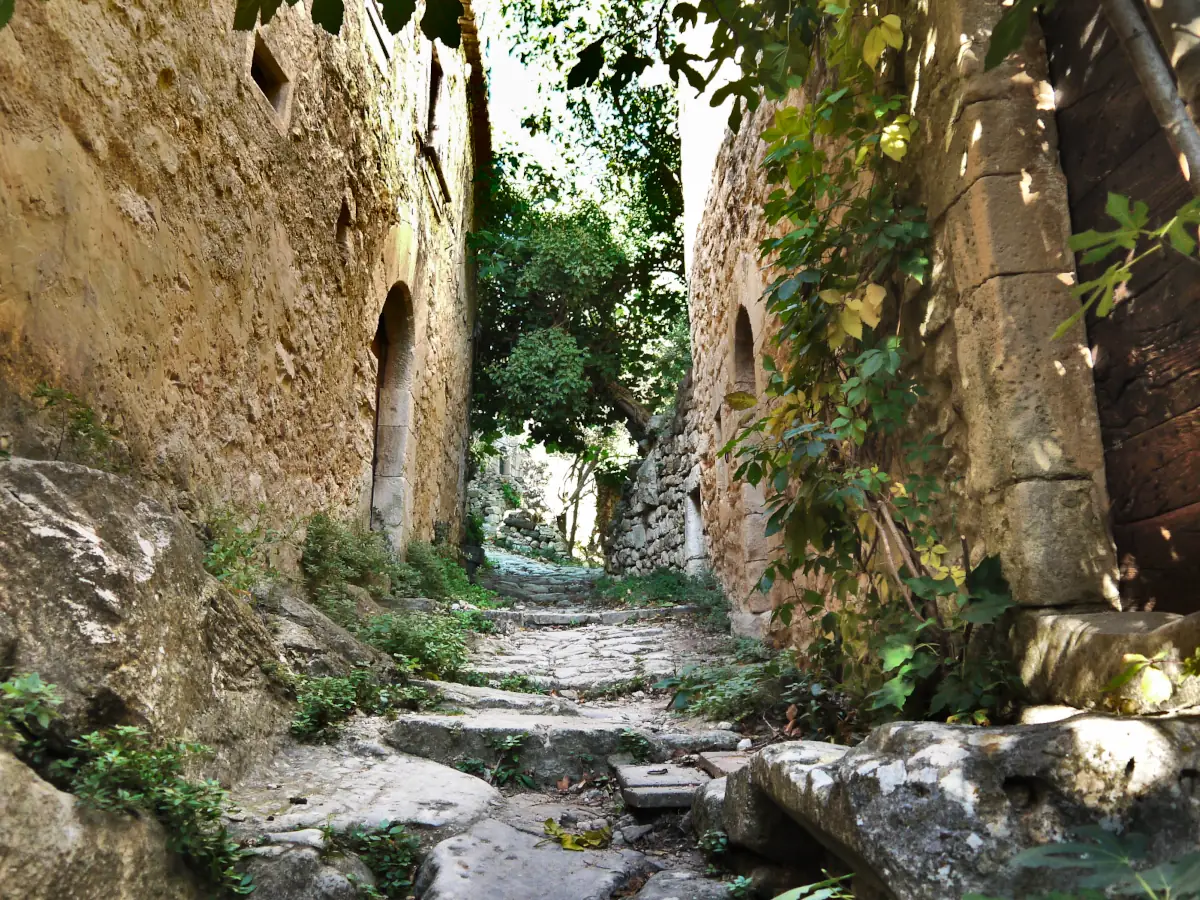
Nature All Around
In the heart of the Luberon Regional Nature Park, Oppède-le-Vieux is paradise for nature lovers. Its winding paths weave through secret valleys and fragrant garrigue, offering breathtaking vistas. Hikers can venture toward the cedar forest or explore the bories, dry-stone huts that testify to an ancient pastoral way of life. Here, biodiversity thrives—in the song of cicadas, the whisper of the wind through the pines, and the silence of wild landscapes.
Find a guesthouse near Oppède-le-Vieux
Oppède-le-Vieux, shaped by the hands of men, the stones, and the elements, is an ode to authentic Provence where history merges with the timeless beauty of the Luberon landscape.



